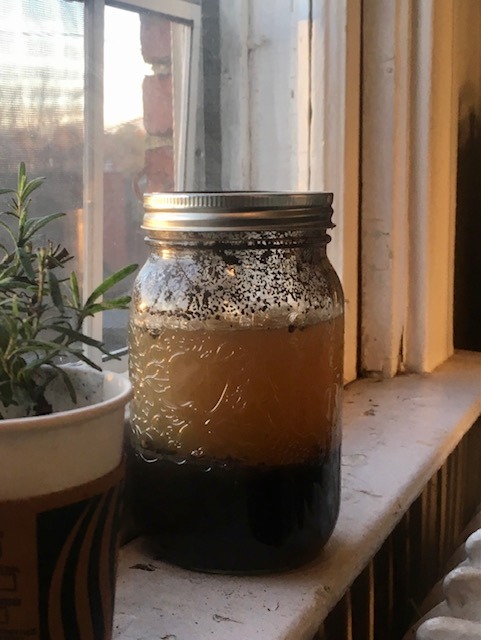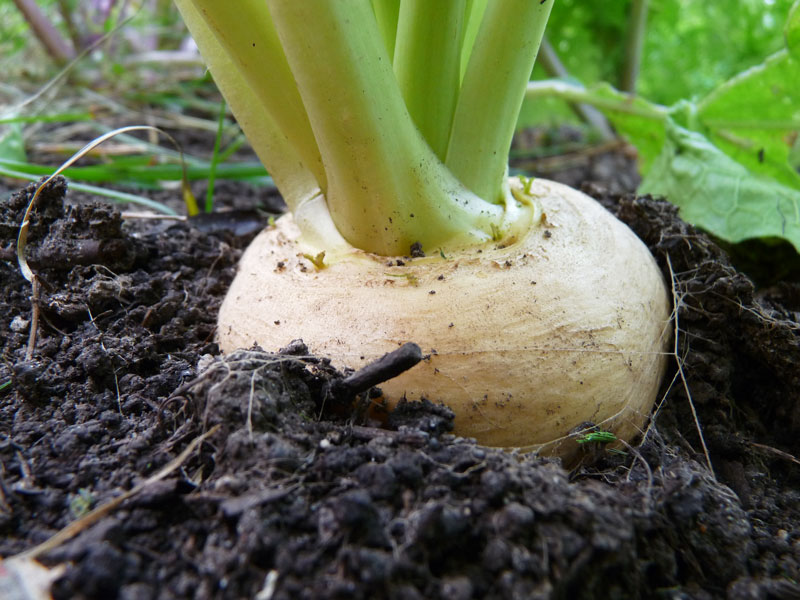Get to Know Your Soil
Soil is made up of different kinds of particles and components: it’s about 50% minerals (sand, clay, and silt) and organic matter (living and decaying plant material), with the the other 50% being water and air. The term soil texture refers to the makeup of sand, silt, and clay in the soil.
Each of the three mineral particle types has different characteristics. Sand particles are the largest, and are irregular in shape – imagine a very tiny boulder. Silt is the second-largest particle type, also with an irregular, tiny-boulder-like shape. Clay is the smallest, and has a flat-sided surface that allows the particles to stick together easily.
Soil texture determines some key qualities in the soil, including water holding capacity (the soil’s ability to retain water or let it drain), nutrient holding capacity (the soil’s ability to retain and provide nutrients) and resistance to compaction (how well the soil stands up to pressure).
Doing a soil texture test at home is an easy, low-tech way to get a greater understanding of your soil. It’s also a fun, mini science project, great for school-age kids (and their grown-ups!) The soil texture test, also called a sedimentation test, is a way of discovering the mineral content of the soil in your garden.
How to do a Soil Texture Test
To do this test, you’ll need to be able to easily dig into your soil, so it’s a great project for spring when the ground has thawed but it is still too early to plant.
Supplies You will Need:
- a glass jar with a tight-fitting lid (a wide-mouth, one-litre mason jar is ideal.)
- liquid dish soap
- a ruler
DID YOU KNOW:Soil Structure and Soil Texture are different!Soil texture refers to the relative proportions of sand, silt and clay particles in the soil. Soil texture does not depend on organic matter. Soil structure refers to the way that sand, silt and clay particles bind together. This binding is related to the interaction between inorganic and organic matter in the soil. |
Method:
- Scoop out a soil sample from about 8 inches below the top layer of soil. Place your sample into the jar until it’s about 3/4 of the way full. If there are any big stones, remove them. Fill the jar the rest of the way with tap water, leaving about 1” of headspace, and add 2-3 tablespoons of liquid dish soap.
- Now the fun part: put the lid on, and give the jar a really, really good shake for 5 minutes!
- Once you’re done shaking, find a spot to put the jar where it can stay undisturbed but you can easily see it, like a kitchen windowsill. Let the contents of the jar settle for at least 24 hours, and preferably for a few days. You will start to see layers emerging, with sand on the bottom, silt in the middle, clay on the top, and water the rest of the way up. It’s OK if the water is still murky.
- Leaving the jar undisturbed, measure the different layers. Using your ruler, take the following measurements:
- Height of the bottom layer (sand)
- Height of the middle layer (silt)
- Height of the top layer (clay)
- Total soil height: from the bottom of the sand layer to the top of the clay layer
- Then calculate the percentages from your measurements. Find the percentage of each layer in relation to the total height. Once you’ve calculated the percentages, you can locate your specific soil mix on this soil triangle diagram.

Example:
Given:
- Total depth: 30 cm
- Total sand: 20 cm
- Total silt: 10 cm
- Total clay: 0 cm
Percent sand = 20cm/30cm = 67%
Percent silt = 10cm/30cm= 33%
Percent clay = 0cm/30cm = 0%
Soil Texture is Sandy Loam
How does this test work?

Each of the 3 mineral particle types has different characteristics. Sand is the largest and has an irregular shaper. Silt is the second-largest, also irregular in shape. Clay is the smallest, with flat-sided surfaces that allows the particles to stick together easily. In the jar when doing the test, the largest, heaviest particles sink to the bottom. That’s your sand layer. The clay settles on the top and forms a thin, congealed layer because of how it sticks together.
While the soil texture test doesn’t give us any information about the organic matter or soil nutrient content, knowing the balance of sand, silt, and clay can help you understand why things happen a certain way in your garden, or give you information about how to better care for your plants. This is because soil texture determines some key qualities in the soil, including water holding capacity (the soil’s ability to retain water or let it drain), nutrient holding capacity (the soil’s ability to retain and provide nutrients) and resistance to compaction (how well the soil stands up to pressure).
Here are a few examples of how these different characteristics affect the garden soil.
Water holding capacity
You may already know or have observed that a sandy soil garden will need to be watered more frequently than a garden with a heavier, clay- or silt-dominant soil. This is because sandy soil has low water holding capacity due to its larger particles. Water drains through the big pour spaces between the particles. So sandy soil gardens will need to be watered more often.
Nutrient holding capacity
Knowing your soil texture will help you determine its ability or capacity to hold on to nutrients. But it won’t tell you what nutrients are in the soil and in what quantity.
This is where we could go down the rabbit hole of soil chemistry but we won’t! Basically, different kinds of soil particles have different abilities to hold onto nutrients. Clay soils are able to hold and transmit nutrients more effectively due to their particles’ flat shape and small size, unlike sandy soil that has less capacity to hold on to nutrients.
A soil texture test alone will not tell us the amount and types of nutrients there are in our soil sample. An additional test – a base saturation test – would have to be done in a proper lab in order to know how many and what types of nutrients are in the soil.
Resistance to compaction
Compaction happens when soil particles become squished together by pressure such as stepping on the soil or heavy rains, and it negatively affects the movement of air and water in the soil. Sandy soils are more resistant to compaction because of the larger size and irregular shape of the particles, while silt and especially clay particles’ tiny size means that if compacted, they can stay stuck together with little airspace in between – the same qualities that made the clay form a thin, sticky layer in the test jar. This density inhibits the free movement of water and air through the soil and can make the soil a less-than-ideal environment for soil-dwelling organisms, from worms to microbes, that need adequate air and water to live. When soils are higher in clay and silt, it therefore becomes extra important not to step on the soil— use paths, stepping stones or old bricks to make sure you can reach the areas you need to, without compacting the growing areas.
Why do a Soil Texture Test?
Learning the mineral content of the soil gives you information about the soil. There are a few ways you can use that information.
You might choose to plant different crops depending on what you learned about the soil. For example, if I found out my soil was sandy, I might decide to plant more root crops, like carrots and beets, that typically do well in sandy, light textured soil. You will often see this kind of information on a seed packet (“prefers light, sandy soil”.)

Learning your soil type does not have to dictate the things you plant, but it can really help you be more mindful of things like watering, drainage (related to water holding capacity), and plant feeding (related to nutrient holding capacity). The more information you have, the more you’ll be able to adapt the care of your garden based on what you know about the soil. If I really want to grow tomatoes, and I have sandy soil, I know they’ll need frequent watering, require mulching and added nutrition in the form of a good quality compost.
There aren’t necessarily “good” or “bad” soil textures— the purpose of this test is to find out your soil’s texture and work with it.
It’s important to note that soil texture cannot be changed. Sandy soil will never be transformed into a clay heavy soil. But soil can be improved over time by adding more organic matter and increasing its biological activity. Even if you don’t make any changes to your planting plans or your maintenance, you now have a scientific explanation for why your garden’s soil behaves the way it does.
Comments (2)
Comments are closed.
Each of the three mineral particle types has different characteristics. Sand particles are the largest, and are irregular in shape – imagine a very tiny boulder. Silt is the second-largest particle type, also with an irregular, tiny-boulder-like shape. Clay is the smallest, and has a flat-sided surface that allows the particles to stick together easily.
Thanks
Absolutely right, FoxFarm! Thank you for your thoughts.